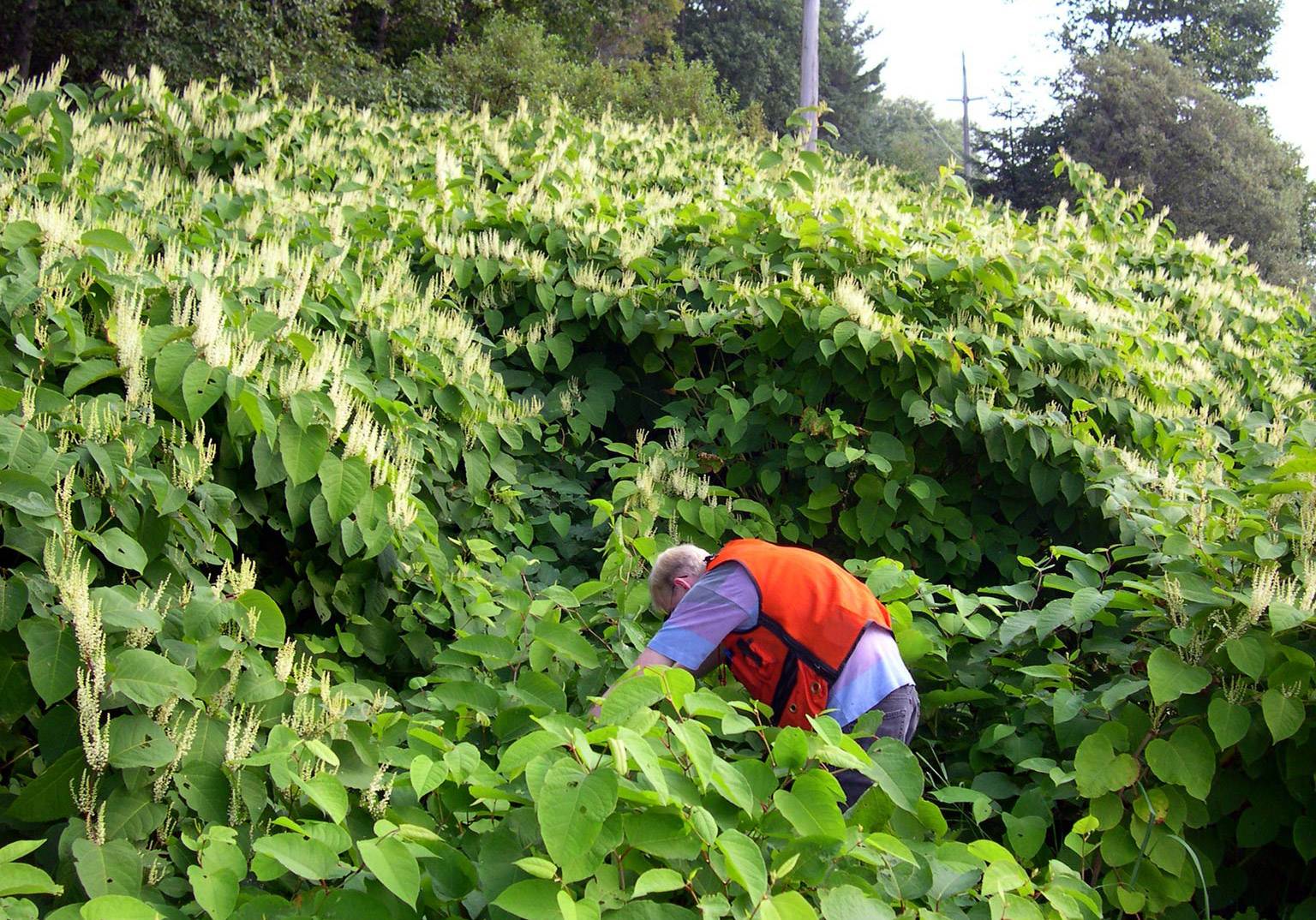
Photo of Japanese knotweed from Cornell University Cooperative Extension.
By Ruth Seward
Director Outreach & Community Engagement
When I work in the community landscape, I watch for signs of invasive plants. The USDA’s definition of an invasive species is “Non-native (or alien) to the ecosystem under consideration; and, whose introduction causes or is likely to cause economic or environmental harm or harm to human health.” The invasive plants I encounter are fast growing and difficult to remove from the environment therefore they can easily eliminate other plants from a greenspace.
Two plants I look out for include Japanese Knotweed and Oriental Bittersweet. Knotweed, sometimes referred to as ‘Bamboo’ is extremely difficult to eradicate from the landscape. It spreads less by its seeds and more by its underground stems (rhizomes), above ground stems and crown. Methods used to curtail its growth include cutting new spring growth back and smothering the plant with a large tarp, cutting back the stem growth in the summer and digging up the root system. People apply herbicide to the plant in the fall, but I prefer to cut the stalks and fill with salt for a less toxic solution.
Oriental Bittersweet, different than the native American bittersweet, also spreads rapidly underground. This is a vine that will grow along trees and woody plants, eventually either strangulating the host or blocking sunlight from leaves. Herbicides can be applied to the leaves and stems of this plant. I prefer to remove it from the plant it is invading, then pull the roots from the ground since they usually are easy to unearth.
Phragmites are an invasive plant that infiltrate urban water landscapes. While there is a native phragmites species in the North East, it is rarely found and co-habitats with other swamp plants. Invasive phragmites will kill other swamp plants and take over the wet regions. To kill phragmites, you also must excavate the root systems. Herbicides used in a swamp area can leech into water system so they should be avoided.
Norway Maple (Acer platanoides) and Tree of Heaven (Ailanthus altissima) are two trees that were intentionally imported from other countries because of their resilient horticulture qualities. The Norway Maple was introduced in the mid-1700s from Europe as a hardy tree that could withstand harsh urban conditions. We now classify this tree as invasive because of its ability to overpopulate an area and eliminate competitors. I do not eliminate mature Norways from the tree canopy, but I also do not include these trees in any landscape designs. Tree of Heaven was imported from China in the late 1700s and became a popular landscape tree because of its unique beauty and ease of care. Now it invades unkept landscapes such as urban parks and green spaces. It also hosts the imported pest – Spotted Lantern Fly. I do eliminate this tree from landscapes whenever possible.
Not all plants contribute to the landscape in a positive manner. When deciding on plants for urban green scaping, we continually balance the pros and cons to each choice. Native plants are optimal but as our climate warms, we consider using North American natives that survive warmer weather. Non-native plants can offer exotic dimensions to a garden palette, but it is important to know if a plant could be invasive in our climate zone. For a list of Massachusetts Invasive plants click this link from the Mass.gov website or use this link for Mass Audubon’s list of common invasive plants.
